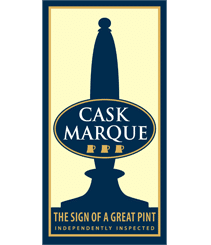Despite a general decline in consumption, beer is still the most popular alcoholic drink in the on-trade, accounting for 48% of drinks sold in GB and 44% of drinks sold in the U.S, according to out-of-home experts CGA and its U.S.-based consultancy, Nielsen CGA.
Cask ale sales have dropped 9.8% in GB over the past year alongside domestic premium which is down 9.3% in America. However, sales of imported beers, world beers, super premium lagers and craft beer continue to rise in both GB and U.S., led in part by consumer demand for premium drinks.
“Despite changing tastes and buying habits, beer is still the #1 preferred beverage for the on-premise in both Great Britain and the U.S.,” commented CGA drinks expert, Mark Jackson.
“Premiumisation of the beer category has outpaced volume declines to realise an increase in dollar and pound sales value. We are seeing world lager in most growth in the GB and import and domestic super premium leading the way in America.”
Over the past two years, value sales of craft beer in GB have risen 21.7%, while world lager sales are up +26.5%. Similar rises have been seen in the U.S., with sales of craft beers up 4.5% and imported beers up 9.4%.
“Rather than buying high volumes of lower priced beer, consumers are opting for lower volumes of quality beer,” Jackson said.
“It’s also worth noting how beer sells best in each region, with one stark difference being the serve preference,” added Nielsen’s CGA’s beer expert, Matt Drummond.
Today’s beer consumers across both markets are generally have higher household incomes and an increased tendency to eat and drink out, according to CGA’s consumer research.
In GB, beer consumers earn an average household income of £41k, with 49% of them eating out and 41% of them drinking out weekly. In the U.S., beer drinkers earn an average of $71k, with 73% of them eating out and 35% drinking out on a weekly basis.
However, beer drinkers across both markets have an older profile (ages 35-55+), with younger drinkers (18/21-34-year olds) the least engaged consumers of beer and showing the most dramatic decline in beer consumption since 2017. In the GB, younger consumers prefer to drink lager (23%) and craft beer (14%), while in America, they choose craft beer (51%), domestic non-craft (51%) and imported beer (47%).
“As a key consumer group who are losing interest in the beer category, understanding and targeting the shifting preferences of younger drinkers is key, as is offering a wide selection of beers that are attractive to this younger population,” Jackson concluded.



